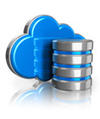VM and cloud management with openQRM
Everything Under Control
Heterogeneous IT infrastructure in the data center has been on the rise for years. But, as the combinations of various technologies and platforms increase, ensuring the assured service levels for the deployed services is becoming increasingly difficult. Cloud management systems provide sophisticated tools to handle these tasks and are available as both free and enterprise variants.
In addition to classic IT infrastructure based on networks, servers, storage, virtualization, and clients, many enterprises today also rely on cloud services. In the simplest case, this just means that the web server with the enterprise website has been outsourced to a hosting service provider, or that external IT services such as spam and anti-virus have been rented as managed services. However, the pressure is increasing to provide increasing numbers of services to users with a high level of availability.
This means that internal services such as email, SharePoint, or file services are being run in external data centers, or even in Amazon, Google, Microsoft, and other clouds. It is practically inevitable that different technologies like virtualization, are then used. For example, many companies use vSphere or Hyper-V internally, whereas virtualization at Amazon is based on Xen. In other words, the more services that are outsourced, the faster administrative staff need to familiarize themselves with new technologies and the corresponding management tools.
It is precisely at this point that cloud management systems such as openQRM enter the game. OpenQRM provides a web-based, open source data center management and cloud platform with the help of which various internal and external technologies can be abstracted and grouped within a common management tool. This management system also takes care of provisioning, high availability, and monitoring of services that are offered. OpenQRM sees itself as a framework and implements an open plugin architecture. For example, an
...Buy this article as PDF
(incl. VAT)
Buy ADMIN Magazine
Subscribe to our ADMIN Newsletters
Subscribe to our Linux Newsletters
Find Linux and Open Source Jobs
Most Popular
Support Our Work
ADMIN content is made possible with support from readers like you. Please consider contributing when you've found an article to be beneficial.






